 Over 5 years ago, Wireless Waffle reported on the fact that a UK radio ham repeater was forced off air to stop interference to licence-exempt 'wireless car unlocking keys' (and no excuses are necessary for re-using the rather fetching graphic one again). In this instance, because radio amateurs are secondary users of the band, and often regarded as second class citizens by regulatory authorities, it was the hams that had to find a solution. The fact that the value of the spectrum used by radio hams is generally rather large, yet they pay little or no licence fees, no doubt increases regulatory lethargy when it comes to lending a hand to deal with these kind of problems.
Over 5 years ago, Wireless Waffle reported on the fact that a UK radio ham repeater was forced off air to stop interference to licence-exempt 'wireless car unlocking keys' (and no excuses are necessary for re-using the rather fetching graphic one again). In this instance, because radio amateurs are secondary users of the band, and often regarded as second class citizens by regulatory authorities, it was the hams that had to find a solution. The fact that the value of the spectrum used by radio hams is generally rather large, yet they pay little or no licence fees, no doubt increases regulatory lethargy when it comes to lending a hand to deal with these kind of problems.In the USA, however, the same situation has occurred, but instead of it being radio hams that caused the problem, it was the US military. And instead of it being wireless car keys being interfered with, it was wireless garage door openers. It seems that residents of Savannah (Georgia) have found their wireless garage door openers have stopped operating. The problem is caused by radio base stations at nearby military facilities which have begun operating in the frequency range 380 to 399.9 MHz, which has hitherto been a common band for wireless garage openers.
But unlike in the UK, the US military have stood their ground and said that it's tough luck for anyone who is affected as the spectrum is rightfully theirs. According to US Government Accountability Office report GAO-06-172R:
To address homeland defense needs and comply with government direction that agencies use the electromagnetic spectrum more efficiently, the Department of Defense (DOD) is deploying new Land Mobile Radios to military installations across the country. The new Land Mobile Radios operate in the same frequency range (380 to 399.9 MHz) as many unlicensed low-powered garage door openers, which have operated in this range for years. While DOD has been the authorized user of this spectrum range for several decades, their use of Land Mobile Radios between 380 and 399.9 MHz is relatively new. With DOD's deployment of the new radios and increased use of the 380-399.9 MHz range of spectrum, some users of garage door openers have experienced varying levels of inoperability that has been attributed to interference caused by the new radios. Nevertheless, because garage door openers operate as unlicensed devices, they must accept any interference from authorized spectrum users.
Yay! A big thumbs up for common sense, or at least from a spectrum management perspective that's what it is. But most legal cases use the 'reasonable person' principal. This basically asks the question, 'What would a reasonable person regard as the correct solution?' So... Is it reasonable that the military should be able to use radio spectrum that is rightfully theirs to defend the country, or is it more important to allow people to be able to open their garage doors without getting out of their cars? In this case, the reasonable person (even if that person happened to be the owner of a wireless garage door opener) would probably cede that the military boys have a point.
Now ask the same question for radio hams... Is it reasonable that radio hams should be able to use radio spectrum that is rightfully theirs to talk about radio stuff, or is it more important to allow people to be able to unlock their cars without putting their key into them? The answer in this case is less clear. The reason for this is probably to do with the description of who is using the spectrum for what.
Most people would agree that 'defending the country' was of high value compared to general laziness in door opening practises. But 'talking about radio stuff', well that's a different case altogether. Of course radio hams do use their frequencies for emergency communications and organisations such as Raynet would no doubt argue that use of radio ham frequencies is not about 'talking about radio stuff' but is more about providing a 'national voluntary communications service provided for the community'. If every radio ham was a member of an organisation such as Raynet then perhaps this would hold some water, but listen to your local radio ham repeater (you can check out the GB7OK and GB3OK repeaters online). I'd call that 'talking about radio stuff', wouldn't you?
For a bit of fun, below is a poll. Which of the uses of the spectrum do you value most highly? Just select the ones that you think are the most valuable and click 'submit' and the results so far will be displayed to you.
add comment
( 3098 views )
| permalink
| 



 ( 2.9 / 3443 )
( 2.9 / 3443 )




 ( 2.9 / 3443 )
( 2.9 / 3443 )
Thursday 4 April, 2013, 22:05 - Licensed, Spectrum Management, Chart Predictions
Posted by Administrator
Posted by Administrator
 It is now only a month or so before the annual pan-European musical bun fight that is the Eurovision Song Contest (which is on the 18th of May). The 39 songs that have made it to the competition (which this year is in Malmo, Sweden) are now available to listen to online - with many having professionally produced videos viewable on YouTube. As always there is a mix of complete Euro-nonsense (Greece with their song Alcohol Is Free), songs that could have been written for Eurovision any time from 1960 to the present day (Switzerland's song You And Me falls into this category) copies of last year's winner in the hope that people will want the same thing again this year (Germany's Glorious for example), sickly pop songs with no real substance (Finland's Abbaesque entry Marry Me) and this year, it seems, a whole swathe of rather nice ballads.
It is now only a month or so before the annual pan-European musical bun fight that is the Eurovision Song Contest (which is on the 18th of May). The 39 songs that have made it to the competition (which this year is in Malmo, Sweden) are now available to listen to online - with many having professionally produced videos viewable on YouTube. As always there is a mix of complete Euro-nonsense (Greece with their song Alcohol Is Free), songs that could have been written for Eurovision any time from 1960 to the present day (Switzerland's song You And Me falls into this category) copies of last year's winner in the hope that people will want the same thing again this year (Germany's Glorious for example), sickly pop songs with no real substance (Finland's Abbaesque entry Marry Me) and this year, it seems, a whole swathe of rather nice ballads. For what it's worth, Wireless Waffle is particularly fond of the Icelandic entry (Ég á Líf), the video for which awaits your enjoyment below. If you are of an emotionally sensitive disposition, make sure you have some tissues to hand.
Our selection of songs that ought to be in the top 5, at least if they are able to reproduce the performance in their videos on stage on the night are:
- Eyþór Ingi Gunnlaugsson - Ég á Líf (Iceland)
- Roberto Bellarosa - Love Kills (Belgium)
- Zlata Ognevich - Gravity (Ukraine)
- Despina Olympiou - An Me Thimáse (Cyprus)
- Dina Garipova - What If (Russia)
What has become more complex, though, is the use of wireless technology for the event. Whilst it's still normal in a concert hall to use wired cameras, the use of radiomicrophones and in-ear monitors (which allow the performer to hear themselves sing without the noise of the surrounding environment) has grown significantly over recent years. Figures provided in response to a European Commission consultation on programme making spectrum show an average annual growth of 12% in the number of such devices employed over the past 15 years (but nearly 40% growth per year over the last 4 years).
| Year | Venue | Radiomicrophones used | In-Ear Monitors used |
|---|---|---|---|
| 1998 | Birmingham, UK | 40 | 2 |
| 1999 | Jerusalem, Israel | 42 | 6 |
| 2000 | Stockholm, Sweden | 48 | 16 |
| 2001 | Copenhagen, Denmark | 48 | 16 |
| 2002 | Tallinn, Estonia | 54 | 16 |
| 2003 | Riga, Latvia | 54 | 16 |
| 2004 | Istanbul, Turkey | 54 | 16 |
| 2005 | Kiev, Ukraine | 54 | 16 |
| 2006 | Athens, Greece | 54 | 16 |
| 2007 | Helsinki, Finland | 56 | 16 |
| 2008 | Belgrade, Serbia | 56 | 16 |
| 2009 | Moscow, Russia | 56 | 16 |
| 2010 | Oslo, Norway | 72 | 32 |
| 2011 | Düsseldorf, Germany | 82 | 40 |
| 2012 | Baku, Azerbaijan | 104 | 80 |
What is driving this growth? One the one hand, the equipment costs are coming down making it more affordable to use wireless microphones. On the other, it's also probably true that in earlier years, microphones would be passed from one user to another as they went on/off stage whereas now each artist and band has their own set of equipment which is tailored to their own needs.
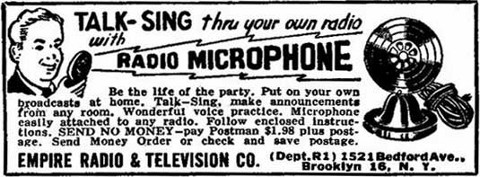
Equipment is one thing, but what about the radio spectrum issues? Radiomicrophones and in-ear monitors are normally analogue (for reasons that can wait for another day) and use around 200 kHz of spectrum each. If all the devices in Baku (184) were turned on at the same time, they would need 37 MHz of spectrum just to exist. But this is not the full story. Firstly, if devices were 200 kHz apart, there would be not a sliver of a gap between them. Whilst they could all successfully transmit, even the smartest digital receivers would find it difficult to separate them from each other - and we aren't dealing with digital technology. In reality, frequencies are separated by at least 300 kHz and often more to allow the receivers room to breathe.
The situation is even worse than this however. Due to the close proximity of devices to each other, and of devices to receivers, there is a tendency for lots of intermodulation to occur. If you assume that each 200 kHz channel that can be used is numbered, starting at 1 then you can't use the adjacent channel because it's too close. You also, because of intermodulation, can't use any channel which represents the difference or sum of twice the value of one channel being used minus another channel being used. As and example:
- If you are using channels 1 and 3 (channel 2 is adjacent to channel 1, so you can't use that), you can't use channel 4 (as its adjacent to 3) or channel 5 (as its 2*3-1). The next available channel is 6.
- If you are using channels 1, 3 and 6, you now also can't use channel 7 (adj to 6). The next available channel is 8.
- If you are using channels 1, 3, 6 and 8 you now can't use channels 9 (adj to 8), 10 (2*8-6) or 11 (2*6-1). The next available channel is 12.
The diagram below shows the situation. Green channels are those in use. Red channels are adjacent channels that can't be used. Purple channels are intermodulation products. Pink channels are both at the same time!
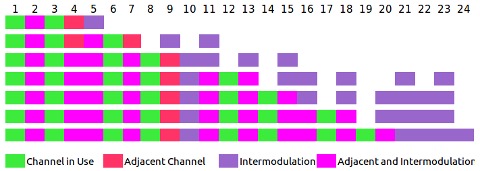
In the example given above, out of 24 available channels, only 8 are useable. Actually, if you extended the diagram at this point you would find that another 10 channels are already 'wallied out' because of intermodulation. So 8 transmitters has used 34 frequencies! The relationship between the number of transmitters on-air and the number of channels sterilised is not linear but in general something of the order of 1 frequency in 5 can be used for radiomicrophones where they are packed densely in a given location if these problems are to be avoided.
This represents pretty poor frequency efficiency but is fairly representative of what is achieved in real life, which is that only something like one fifth of any spectrum available for radiomicrophones or in-ear monitors can be used in any one venue at the same time. Returning to Baku then, the amount of spectrum required is not 37 MHz, but to support 184 devices simultaneously would require more like 184 MHz of spectrum: give or take 1 MHz per device!
Most radiomicrophones (and in-ear monitors) operate in and amongst television broadcasts in the UHF band which notionally runs from 470 to 862 MHz. In many countries, however, the upper end of this band from 790 MHz upwards has now been set-aside for mobile broadband services, leaving 320 MHz remaining for television broadcasting (and of course radio microphones).
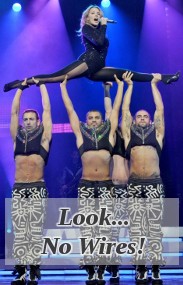 Azerbaijan, last year's host of the Eurovision, is yet to switch over to digital TV and equally has not yet used the upper part of the UHF TV band for mobile services and so finding 180 MHz of spectrum for radiomicrophones is presumably not that difficult. In 2013, however, the contest is in Malmo, Sweden. Not only has Sweden cleared the upper part of the UHF band for mobile services, but it has also gone over to digital broadcasting. Malmo is virtually on the border between Sweden and Denmark meaning that the local TV spectrum will be occupied not only by the 8 Swedish multiplexes but by the Danish ones too. Finding 180 MHz of spectrum for this year's competition is therefore much more challenging.
Azerbaijan, last year's host of the Eurovision, is yet to switch over to digital TV and equally has not yet used the upper part of the UHF TV band for mobile services and so finding 180 MHz of spectrum for radiomicrophones is presumably not that difficult. In 2013, however, the contest is in Malmo, Sweden. Not only has Sweden cleared the upper part of the UHF band for mobile services, but it has also gone over to digital broadcasting. Malmo is virtually on the border between Sweden and Denmark meaning that the local TV spectrum will be occupied not only by the 8 Swedish multiplexes but by the Danish ones too. Finding 180 MHz of spectrum for this year's competition is therefore much more challenging.But move forward 10 years and then what will happen. For starters, at the current rate of growth, and assuming no improvement in the spectrum efficiency of wireless microphone technology, there will be a requirement for 560 MHz of spectrum for the Eurovision. Secondly, the parts of the UHF TV band currently unoccupied and used for these purposes will be full of 'cognitive radio' devices hunting out every last vestige of unused spectrum. What will happen then? The simple fact is that no-one really knows, but the programme making community are worried, and understandably so. If there was a way around the intermodulation problem, then the amount of spectrum required would decrease, so perhaps now is the time for some enterprising RF engineer to find a solution to this problem so that we can continue to enjoy the pageantry of the world's greatest song contest. Either that or sing less? Some would argue that for the Eurovision that would be no bad thing.
Monday 1 April, 2013, 08:04 - Spectrum Management
Posted by Administrator
Posted by Administrator
 Mobile operators have been outraged by the results of tests carried out by the University of Bolondok, Hungary, which have shown that, in some cases, up to 30% of the spectrum sold at auction in Europe is not electromagnetic. One of the team behind the work done by the University, Prof. I. Laslo said,
Mobile operators have been outraged by the results of tests carried out by the University of Bolondok, Hungary, which have shown that, in some cases, up to 30% of the spectrum sold at auction in Europe is not electromagnetic. One of the team behind the work done by the University, Prof. I. Laslo said,“We became suspicious of the quality of European spectrum following an undergraduate student project to prepare a set of quality criteria for spectrum auctions. The student’s results were inconsistent, which led us to conduct further tests. Upon closer examination, we discovered traces of non-electromagnetic spectrum within that which has been auctioned, and were surprised to find that in some cases the amount of non-electromagnetic spectrum accounted for up to 30% of that which has been sold.”
The professor refused to indicate which countries were the worst offenders but added,
“You can get an idea of the intrinsic amount of spectrum that is electromagnetic by considering how much money was raised in the auctions themselves. The fact that there is a correlation between lower prices and the level of non-electromagnetic spectrum that was sold suggests that operators were probably aware of the practice when preparing their bids.”
An industry expert, who wished to remain anonymous, has said that the practise of Governments selling non-electromagnetic spectrum should have been anticipated.
“The huge prices paid at auction for spectrum will inevitably lead to regulators wishing to find a way to ‘bulk up’ the spectrum so as to make greater revenues from its sale.”
Asked if they thought that the operators knew that not all the spectrum was electromagnetic they added,
“These murky practises are not confined to regulators. Despite claiming that spectrum is their most valuable resource, there have been cases of operators releasing some of the spectrum they have historically been using, in return for the promise of alternative, presumably pure electromagnetic, spectrum at future auctions. This is a clear indication that they are aware of the fact that some of their spectrum was, perhaps, not as electromagnetic as it should have been.”
No regulators were willing to comment on the situation but mobile operators have been quick to jump on the findings. A senior employee of mobile conglomerate T-Orasdafonica, who also wished to remain anonymous, told us,
“We are outraged to find that regulators have been selling spectrum that may not be fit for purpose. We bought it in good faith. It takes us some time from the auction itself to the point where we actually put the spectrum into use and so we don’t necessarily notice its purity straight away. Once we heard of the findings from the tests, we immediately went out and began to try using the spectrum we had bought. We can concur with the findings that there is some which does not appear to be electromagnetic. We strongly refute the insinuation that we knew of these issues beforehand or that we have knowingly participated in the sale, purchase, or use of spectrum that was anything other than electromagnetic. We intend to instigate an immediate investigation into our spectrum holdings and will be holding the Government culpable for any which we find not to be electromagnetic.”
 Asked if they would continue to buy spectrum at auction, most operators contacted said that they would, but that they would ensure that a rigorous testing regime was put in place to ensure the quality of the product being sold, before opening their wallets. They suggested that it was the regulators that should clean up their act and that operators, who have been encouraged to rely on market forces were the ones who had been taken for a ride. One likened it to having been 'sold a pup when you set out to buy a thoroughbred'. One even went so far as to suggest that there were bigger problems in the supply chain which have been forced upon the whole mobile market by the ever downward spiral of prices.
Asked if they would continue to buy spectrum at auction, most operators contacted said that they would, but that they would ensure that a rigorous testing regime was put in place to ensure the quality of the product being sold, before opening their wallets. They suggested that it was the regulators that should clean up their act and that operators, who have been encouraged to rely on market forces were the ones who had been taken for a ride. One likened it to having been 'sold a pup when you set out to buy a thoroughbred'. One even went so far as to suggest that there were bigger problems in the supply chain which have been forced upon the whole mobile market by the ever downward spiral of prices.The University of Bolondok has offered to work with operators to develop a set of agreed quality tests, and present them for ratification at CEPT. The operators have cautiously welcomed this offer but have suggested that it is the regulators who should come clean on their practices rather than operators who are to blame.
Previous posts entitled 'What are the chances?' have mostly been about the chances of pirate 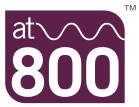 radio stations causing enough interference to merit the authorities tracking them down. In a sense, there is a certain similarity between that topic and the one discussed here as the question that's being explored today is 'What are the chances... of receiving interference from 4G networks at 800 MHz if you are a UK DTT viewer?' Rather a long title, but as of this week, an organisation called Digital Mobile Spectrum Limited (DMSL) who are badging themselves as at800 have been given £180 million specifically to try and answer exactly that question.
radio stations causing enough interference to merit the authorities tracking them down. In a sense, there is a certain similarity between that topic and the one discussed here as the question that's being explored today is 'What are the chances... of receiving interference from 4G networks at 800 MHz if you are a UK DTT viewer?' Rather a long title, but as of this week, an organisation called Digital Mobile Spectrum Limited (DMSL) who are badging themselves as at800 have been given £180 million specifically to try and answer exactly that question.
So what is the problem exactly? The UK has just auctioned spectrum which is colloquially known as the 'Digital Dividend'. This radio spectrum was previously used for television broadcasting, representing channels 61 to 69 inclusive (790 to 862 MHz). Many people have antennas and receivers that were receiving television pictures on those channels until very recently. As of now, these frequencies are going to be used for 4G mobile services. Once these services are on-air, there will be mobile base stations transmitting on frequencies which it is possible for set-top boxes and digital televisions to receive - though as mobile and television technologies are different, they won't receive pictures, just the signals (a bit like listening to a conversation in a foreign language - you can hear it but you can't decipher it).
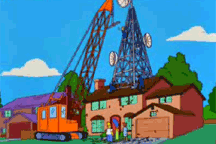 Under certain circumstances, it is possible that the 4G transmissions could cause interference to television (Freeview) reception. The circumstances are complex but generally if television transmissions on channel 59 or 60 are being used in a particular area, the receivers will be more susceptible to interference. If those receivers are close to a mobile base station transmitting at the lower end of the new 800 MHz mobile band, then interference could be caused (mobile operator 'three' have the frequencies at the bottom of the band most likely to cause a problem). Calculating who will be affected is therefore rather complex - it is a combination of which television transmitter they are watching, how far away from it they are, and how close to a three base station they are. Thus it is not straightforward to identify whose viewing might be disrupted.
Under certain circumstances, it is possible that the 4G transmissions could cause interference to television (Freeview) reception. The circumstances are complex but generally if television transmissions on channel 59 or 60 are being used in a particular area, the receivers will be more susceptible to interference. If those receivers are close to a mobile base station transmitting at the lower end of the new 800 MHz mobile band, then interference could be caused (mobile operator 'three' have the frequencies at the bottom of the band most likely to cause a problem). Calculating who will be affected is therefore rather complex - it is a combination of which television transmitter they are watching, how far away from it they are, and how close to a three base station they are. Thus it is not straightforward to identify whose viewing might be disrupted.
All is not lost though, as there is a way to solve the interference. The solution to the problem is to fit a filter which allows the television transmissions through but blocks the 4G signals. at800 have been given the money to help work out who will be affected and to pay for filters to be fitted. It has been estimated that up to almost 1 million UK television households could be affected. The key here is 'could be...' because experience in other countries where 800 MHz services have already been launched is that they have not led to the degree of interference problems that are predicted.
There is no doubt that some households will be affected, but the numbers could be well below 1 million. Those which are most susceptible are those which are in areas where television signals are already weak. In some of those areas, viewers will have fitted amplifiers to their TV antennas to boost the signal. These amplifiers are particularly susceptible to interference and can even be completely overloaded by strong 4G transmitters. Similar amplifiers are also used to distribute signals from a TV antenna to multiple television sockets. Some houses with multiple sockets may have an amplifier fitted and not even be aware of it. In blocks of flats the same idea applies. These situations will make fitting a filter more complex, but still feasible.
In some (rare) cases, it is possible that no amount of filtering will solve the problem. In these circumstances at800 has the power, and the money, to replace the terrestrial television system with an alternative such as cable or satellite.
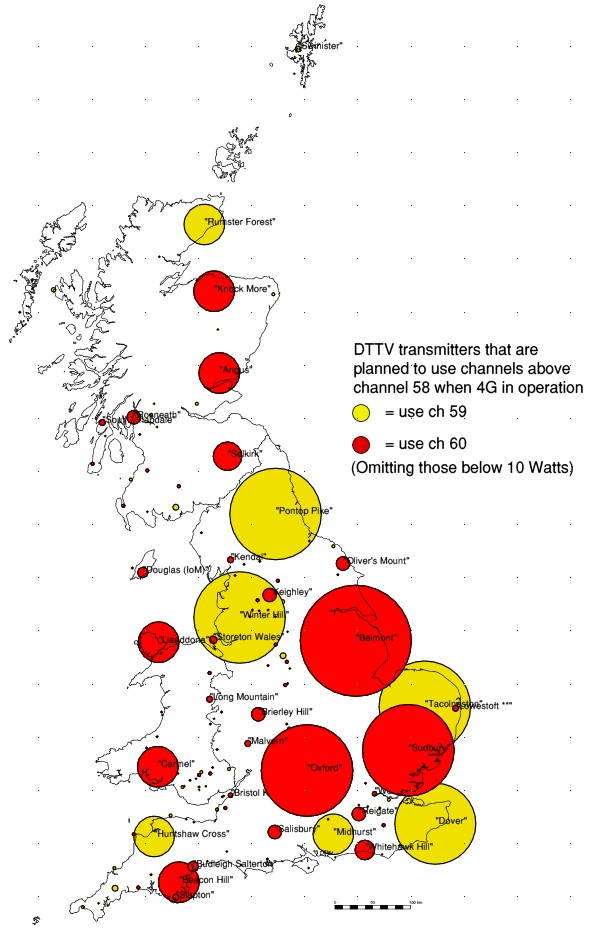 Should you be worried? Firstly, you need to understand whether the television transmitter in your area uses channels 59 or 60. The map on the right (click for a larger version) shows those television transmitter which will use these channels. If you are served by one of these transmitters then that puts you at a higher risk. If you are towards the edge of the coverage area then your risk is increased. If you are near a three base station your risk is further increased (sadly there is no simple way to determine this). If you are affected, what will you see? In a word... nothing! Your reception of any programmes transmitted on the frequencies represented by channels 59 or 60 will stop, dead. Alternatively, the picture might break up badly.
Should you be worried? Firstly, you need to understand whether the television transmitter in your area uses channels 59 or 60. The map on the right (click for a larger version) shows those television transmitter which will use these channels. If you are served by one of these transmitters then that puts you at a higher risk. If you are towards the edge of the coverage area then your risk is increased. If you are near a three base station your risk is further increased (sadly there is no simple way to determine this). If you are affected, what will you see? In a word... nothing! Your reception of any programmes transmitted on the frequencies represented by channels 59 or 60 will stop, dead. Alternatively, the picture might break up badly.
Unfortunately, losing reception or having bad reception is not necessarily evidence of interference from 4G base stations. It could be caused by a myriad of other problems. This is what makes the job of at800 that much more difficult. They will need to decide, when confronted with an apparent case of interference, whether 4G is the cause or whether it is something else. Their decisions on this will no doubt prove controversial!
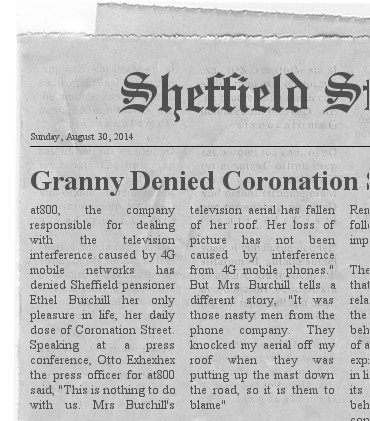
If you use satellite (Sky or Freesat) or cable then you don't need to worry. If you use Freeview, then perhaps now would be a good time to check your reception, at least then you will know whether anything changes.
 radio stations causing enough interference to merit the authorities tracking them down. In a sense, there is a certain similarity between that topic and the one discussed here as the question that's being explored today is 'What are the chances... of receiving interference from 4G networks at 800 MHz if you are a UK DTT viewer?' Rather a long title, but as of this week, an organisation called Digital Mobile Spectrum Limited (DMSL) who are badging themselves as at800 have been given £180 million specifically to try and answer exactly that question.
radio stations causing enough interference to merit the authorities tracking them down. In a sense, there is a certain similarity between that topic and the one discussed here as the question that's being explored today is 'What are the chances... of receiving interference from 4G networks at 800 MHz if you are a UK DTT viewer?' Rather a long title, but as of this week, an organisation called Digital Mobile Spectrum Limited (DMSL) who are badging themselves as at800 have been given £180 million specifically to try and answer exactly that question.So what is the problem exactly? The UK has just auctioned spectrum which is colloquially known as the 'Digital Dividend'. This radio spectrum was previously used for television broadcasting, representing channels 61 to 69 inclusive (790 to 862 MHz). Many people have antennas and receivers that were receiving television pictures on those channels until very recently. As of now, these frequencies are going to be used for 4G mobile services. Once these services are on-air, there will be mobile base stations transmitting on frequencies which it is possible for set-top boxes and digital televisions to receive - though as mobile and television technologies are different, they won't receive pictures, just the signals (a bit like listening to a conversation in a foreign language - you can hear it but you can't decipher it).
 Under certain circumstances, it is possible that the 4G transmissions could cause interference to television (Freeview) reception. The circumstances are complex but generally if television transmissions on channel 59 or 60 are being used in a particular area, the receivers will be more susceptible to interference. If those receivers are close to a mobile base station transmitting at the lower end of the new 800 MHz mobile band, then interference could be caused (mobile operator 'three' have the frequencies at the bottom of the band most likely to cause a problem). Calculating who will be affected is therefore rather complex - it is a combination of which television transmitter they are watching, how far away from it they are, and how close to a three base station they are. Thus it is not straightforward to identify whose viewing might be disrupted.
Under certain circumstances, it is possible that the 4G transmissions could cause interference to television (Freeview) reception. The circumstances are complex but generally if television transmissions on channel 59 or 60 are being used in a particular area, the receivers will be more susceptible to interference. If those receivers are close to a mobile base station transmitting at the lower end of the new 800 MHz mobile band, then interference could be caused (mobile operator 'three' have the frequencies at the bottom of the band most likely to cause a problem). Calculating who will be affected is therefore rather complex - it is a combination of which television transmitter they are watching, how far away from it they are, and how close to a three base station they are. Thus it is not straightforward to identify whose viewing might be disrupted. All is not lost though, as there is a way to solve the interference. The solution to the problem is to fit a filter which allows the television transmissions through but blocks the 4G signals. at800 have been given the money to help work out who will be affected and to pay for filters to be fitted. It has been estimated that up to almost 1 million UK television households could be affected. The key here is 'could be...' because experience in other countries where 800 MHz services have already been launched is that they have not led to the degree of interference problems that are predicted.
There is no doubt that some households will be affected, but the numbers could be well below 1 million. Those which are most susceptible are those which are in areas where television signals are already weak. In some of those areas, viewers will have fitted amplifiers to their TV antennas to boost the signal. These amplifiers are particularly susceptible to interference and can even be completely overloaded by strong 4G transmitters. Similar amplifiers are also used to distribute signals from a TV antenna to multiple television sockets. Some houses with multiple sockets may have an amplifier fitted and not even be aware of it. In blocks of flats the same idea applies. These situations will make fitting a filter more complex, but still feasible.
In some (rare) cases, it is possible that no amount of filtering will solve the problem. In these circumstances at800 has the power, and the money, to replace the terrestrial television system with an alternative such as cable or satellite.
 Should you be worried? Firstly, you need to understand whether the television transmitter in your area uses channels 59 or 60. The map on the right (click for a larger version) shows those television transmitter which will use these channels. If you are served by one of these transmitters then that puts you at a higher risk. If you are towards the edge of the coverage area then your risk is increased. If you are near a three base station your risk is further increased (sadly there is no simple way to determine this). If you are affected, what will you see? In a word... nothing! Your reception of any programmes transmitted on the frequencies represented by channels 59 or 60 will stop, dead. Alternatively, the picture might break up badly.
Should you be worried? Firstly, you need to understand whether the television transmitter in your area uses channels 59 or 60. The map on the right (click for a larger version) shows those television transmitter which will use these channels. If you are served by one of these transmitters then that puts you at a higher risk. If you are towards the edge of the coverage area then your risk is increased. If you are near a three base station your risk is further increased (sadly there is no simple way to determine this). If you are affected, what will you see? In a word... nothing! Your reception of any programmes transmitted on the frequencies represented by channels 59 or 60 will stop, dead. Alternatively, the picture might break up badly.Unfortunately, losing reception or having bad reception is not necessarily evidence of interference from 4G base stations. It could be caused by a myriad of other problems. This is what makes the job of at800 that much more difficult. They will need to decide, when confronted with an apparent case of interference, whether 4G is the cause or whether it is something else. Their decisions on this will no doubt prove controversial!

If you use satellite (Sky or Freesat) or cable then you don't need to worry. If you use Freeview, then perhaps now would be a good time to check your reception, at least then you will know whether anything changes.

